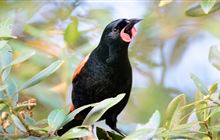Lead PF2050 Strategic documents
Introduction
We develop the strategy, implementation plans, and progress reports for the Predator Free 2050 programme with input from communities and collaborators.DOC is the government’s lead agency responsible for the Predator Free 2050 programme and the strategic direction of the programme.
Documents on this page:
- Predator Free 2050 Strategy
- Predator Free 2050 Implementation Plan (2024-2030)
- Predator Free 2050 Biennial Progress Report (2021-2023)
The strategy and implementation plan map both big-picture and the detailed steps we’ll take to get to a predator free Aotearoa. The biennial progress report tracks the progress towards Predator Free 2050 goals.
Predator Free 2050 Strategy
The Predator Free 2050 Strategy was launched in March 2020. We developed the strategy with input from iwi, hapū, conservation experts, and people involved in the Predator Free movement. The Strategy is for all New Zealanders and guides the work of all organisations involved in the programme.
What’s in the strategy
The strategy includes the:
- vision and goal
- target predators
- organisations involved
- 5-year interim goals for 2020-2025
- three actions we’ll take to achieve Predator Free 2050.
These three key actions towards a predator-free New Zealand are:
- mobilising communities and resources to take action
- innovating new tools and technologies to eradicate predators
- accelerating eradication across the country once tools and support are in place
We'll start a scheduled review of the Predator Free 2050 Strategy with the aim of having a revised strategy and new interim goals in place by 2025.
View the strategy in English Towards a predator free New Zealand - English (PDF, 1,521K)
View the strategy in Te Reo Te Anga Whakamua Kia Aotearoa Kaikonihi-Kore - Te Reo (PDF, 1,930K)
Predator Free 2050 Interim Implementation Plan (2024-2030)
The Predator Free 2050 Interim Implementation Plan sets the strategic work programme for key organisations responsible for the PF2050 programme for 2024 to 2030. We led the development of the plan as the lead government agency for the programme.
We collaborated with:
- Predator Free 2050 Ltd
- Predator Free New Zealand Trust
- Zero Invasive Predators (ZIP)
- key research institutions.
What’s in the plan
The plan outlines the five focus areas of the programme. Within those focus areas, it summarises priority projects, their funding, and which organisation will lead them.
Major projects include:
- focussing effort on large eradication projects
- increasing the investment in research, development and innovation (RD&I)
- developing a clear plan for beyond 2030.
Eradication projects include:
- completing 100,000 hectares of elimination through Predator Free South Westland
- beginning a pilot for Predator Free Rakiura
- starting New Zealand’s largest island eradication ever – Maukahuka Pest Free Auckland Island.
Research, development and innovation (RD&I) will focus on:
- developing cost effective and scalable methods for urban and rural environments
- increasing investment in knowledge and innovation, including continuing to fund breakthrough tools and technology through programmes like Tools to Market and Products to Projects.
Planning the roll out phase after 2030 will include:
- using super-computing power to model how we might achieve Predator Free 2050
- an analysis on how achieving PF2050 will create value for our economy, environment, communities, and culture.
With this implementation plan, we aim to secure the trust and confidence of Government and New Zealanders to continue the Predator Free 2050 programme and fund it to completion.
Read the Predator Free 2050 Interim Implementation Plan 2024-2030 (PDF, 936K)
Predator Free 2050 Biennial Progress Report (2021-2023)
In 2024, DOC published the Predator Free 2050 Biennial Progress Report (2021-2023). This report assesses progress towards the Predator Free 2050 goal, and the seven interim goals in the Predator Free 2050 Strategy. It follows the first progress report in 2021, five years after the Predator Free 2050 goal was adopted.
What’s in the biennial progress report
The progress report summarsies the seven interim goals and our progress towards them. The purpose of the interim goals is to ensure investment and research is focused on priorities, as well as measuring progress towards the ultimate goal
In the seven years since the Predator Free 2050 goal was adopted, we’ve made great progress and grown our understanding of:
- achieving island eradications
- investing in research and development
- protecting native species across millions of hectares
- growing the number of iwi-led projects.
We’ve achieved success in the Predator Free Programme thanks to the collaboration and hard work of many different agencies and groups. These include:
- central and local government
- iwi and hapū
- NGOs
- community groups
- businesses and innovators
- landowners
- individuals.
The progress we’ve made and knowledge we’ve gained will help the review of the Predator Free 2050 Strategy in 2024. This will include setting new goals to focus effort and investment on the programme’s priorities and challenges to 2030.
View the Predator free 2050 Biennial Progress Report 2021-2023 (PDF, 6,780K)




